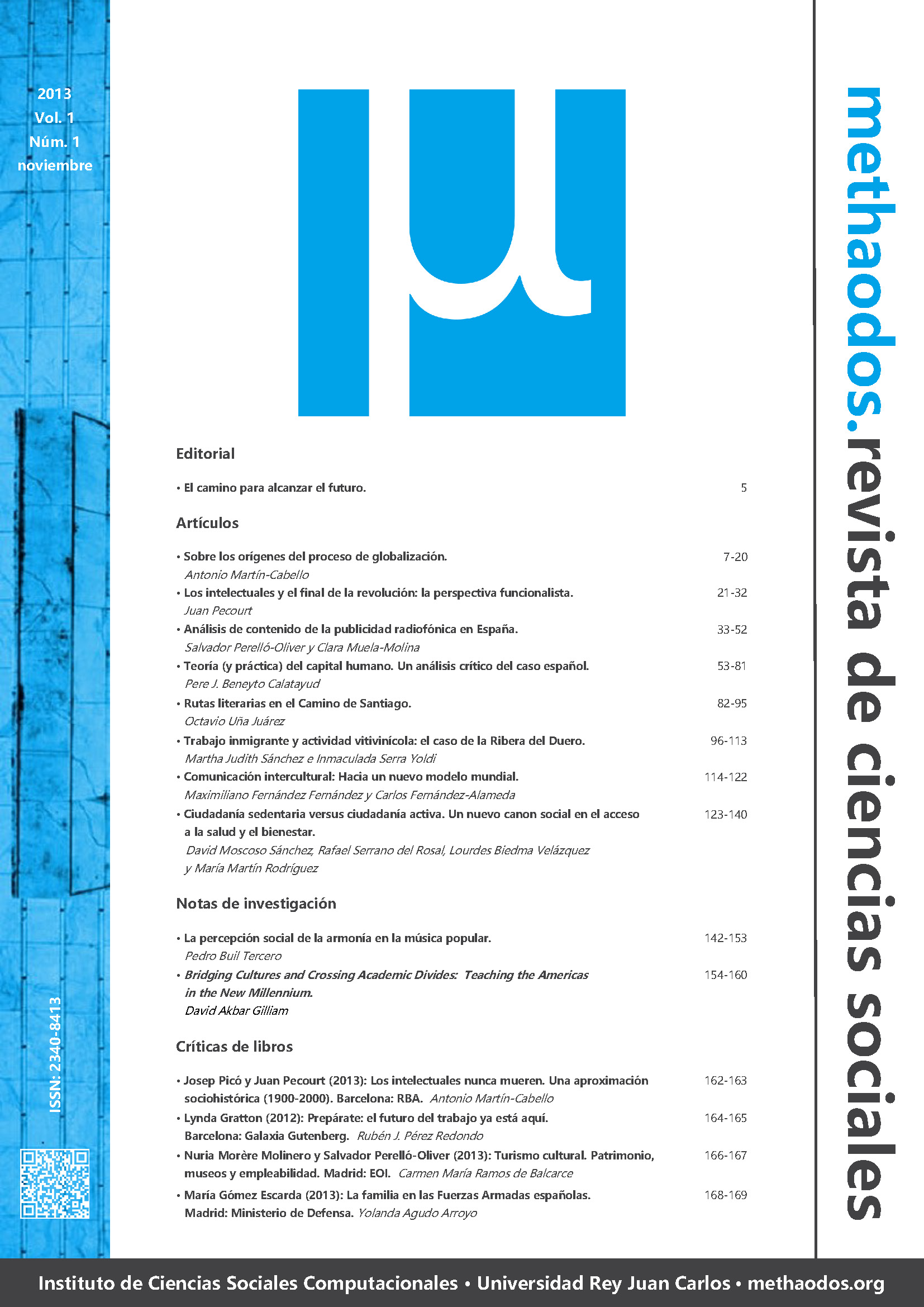Bridging Cultures and Crossing Academic Divides: Teaching the Americas in the New Millennium
Main Article Content
Abstract
African Diaspora Studies and Latin American (and Latino) Studies are traditionally seen as two distinct disciplines, each having its own perspective, each having its particular areas of concern. Some scholars, however, see each of these fields of study as complementary, and take the position that neither field can be fully understood or appreciated without including the history, culture and theoretical framework of the other. I make this argument based on four factors: 1) Over 90% of the Africans brought to the Americas as slaves were sent to Latin America 2) A documented shared history for more than 500 years 3) A trend toward interdisciplinarity and multicultural perspective among scholars in the two fields 4) The shared political genesis of Black Studies and Latino Studies in the 1960s and 1970s. As someone who teaches Spanish language, and researches Afro-Hispanic writers and themes, I welcomed the challenge to enhance an existing Latin American and Latino Studies course with a curriculum to more fully reflect the development of the modern Americas as both a clash and combination of African, Native American (indigenous), and European peoples: their bloodlines, cultures, languages, faith traditions, and political struggles. This course is called “Founding Myths and Cultural Conquest in Latin America.” It is one of two courses prerequisite to a major or minor in Latin American and Latino Studies, and is now regularly cross-listed in the African and Black Diaspora Studies Program.
Downloads
Article Details
References
National Museum of Mexican Art (2006a): The African Presence in Mexico: from Yanga to the Present. Chicago: Mexican Fine Arts Center Museum.
— (2006b): Teaching and Learning Guide, Grades: 6-12. Chicago: Mexican Fine Arts Center Museum (DVD).
Schomburg Center for Research in African American Culture (2013): “African Slaves in the Americas during the Atlantic Trade, 1450-1870. Chart based on information in The African Slave Trade by Philip Curtin”. New York: Schomburg Center for Research in African American Culture-The New York Public Library. [31-10-2013]. Disponible en web:
Andrews, G. R. (2004): Afro-Latin America: 1800-2000. New York: Oxford UP.
Appiah, K. A. and H. L. Gates, Jr. Eds. (1999): Africana: The Encyclpedia of the African and African American Experience. New York: Basic Civitas Books.
Burns, E. B. and. Charlip, J. A. (2007): Latin America: An Interpretive History. Upper Saddle River, NJ: Pearson-Prentice Hall.
Captain-Hidalgo, Y. (1993): The Culture of Fiction in the Works of Manuel Zapata Olivella. Columbia, MI: The University of Missouri Press.
Cruz-Carretero, S. (2006a): “The African presence in colonial Mexico”, en Afro-Mexican Studies Symposium. Chicago: Mexican Fine Arts Center Museum (Panel presentation: IL 4 April).
— (2006b): The African Presence in Mexico: from Yanga to the Present. Chicago: Mexican Fine Arts Center Museum (Tran. English by L.A. Keller).
Curtin, P. D. (1969): The African Slave Trade: A Census. Madison: Wisconsin UP.
Dzidziendyo, A. and Oboler, S. Eds. (2005): Neither Enemies Nor Friends: Latinos, Blacks and Afro-Latinos. New York: Palgrave.
Fuentes, C. (1999[1992]): The Buried Mirror: Reflections on Spain and the New World. Boston: Houghton Mifflin, Mariner.
Gates Jr., H. L. (2011): Black in Latin America. New York: New York UP.
— (2013): The African Americans: Many Rivers to Cross. Arlington, VA: PBS Org (DVD). [2-11-2013]. Disponible en web: http://www.pbs.org/wnet/african-americans-many-rivers-to-cross/.
Golash-Boza, T. M. (2011a): Yo soy negro: Blackness in Peru. Gainesville, FL: Gainesville UP.
— (2011b): “Yo soy Negro: Defining Blackness in Peru”. Chicago: DePaul University-WBEZ Radio Chicago. [31-10-2013]. Disponible en web: http://www.wbez.org/users/center-black-diaspora-depaul-university-0.
Hernandez Cuevas, M. P. (2004): African Mexicans and the Discourse on Modern Nation. Lanham, MD: UP of America.
Jackson, R. (1998): Black Writers and Latin America: Cross Cultural Affinities. Washington, D.C.: Howard UP.
Lazú, Jacqueline (2004, 2008): The Block/El bloque: A Young Lords Story. Chicago: DePaul University Humanities Center (VHS Tape and Diálogo article).
Sternberg, C. (2013): “Latinos in the U.S.: Pilsen and Bronzeville – Contested Urban Spaces.”, en LSP 200 Seminar on Multiculturalism in the U.S., Fall 2013. Chicago: DePaul University, Syllabus.
Tillis, A. D. (2005): Manuel Zapata Olivella and the “Darkening” of Latin American Literature. Columbia, MO: U. Missouri P.
Van Sertima, I. (1995): “Fifteen Years Later”, en Van Sertima, I. Ed.: African Presence in Early America. New Brunswick, NJ: Transaction Publishers.
Vinson III, B. (2001): Bearing Arms for His Majesty: The Free-Colored Militia in Colonial Mexico. Stanford, CA: Stanford UP.
Zapata-Olivella, M. (1992): Changó el Gran Putas. 1983. Bogotá: Rei Andes.

